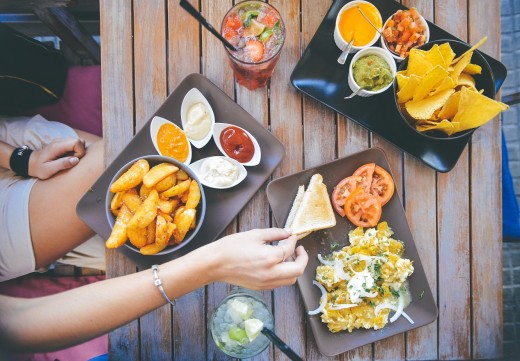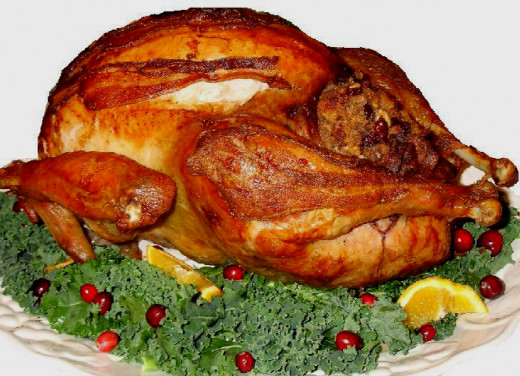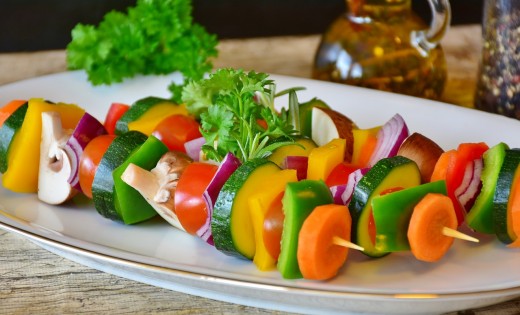How to Calculate How Much Food to Make for Social Gatherings and Parties

Making a meal for a large crowd of hungry people is no easy task. In addition to accommodating peoples tastes, allergies, diets, etc you have to figure out how much food to make. If you make too much food, you'll be sending everyone home with a bucket of food. Chances are you probably over spent and will end up having a lot of waste. In addition to that, no one wants to cook more than they have to. If you make too little food, you'll have angry hungry guests talking about you behind your back. Food is often the center of many get-togethers (like Thanksgiving), so it makes sense to do your homework so that you can prepare the right amount of food for your guests.
Factors Influencing Food Consumption
Predicting how much food people will eat can be difficult because there are so many factors that influence it. As we saw in my article about food consumption in America, a person's age as well as their body type greatly influences the amount of food they eat. Other obvious factors that influence how much people eat include such things as when the meal is served, the variety of choices served, the gender of your guests and even whether the dish is served "family-style" or whether everyone gets their own plate instead.
Let's also not forget about the elements of persuasion either. If your eighty-five year old grandmother slaved in the kitchen for 12 hours to make a meal, you bet people are going to eat it! As you can see, there are many factors, many of which aren't quantifiable, that influence food consumption at social gatherings. Nonetheless, there are several methods a formulae available to make accurate estimates of how much food to make. Below, I have explained a few methods that I have used in the past. Please keep in mind that these methods will only provide an estimate. Determining your food needs is more likely an art than it is a science. These methods will provide you a good starting point to planning your next gathering.
Simplified Weight Method
The simplified weight method simply assumes that adults will eat about 1.2 pound of food and that children (younger than about 14) will eat about a 0.6 pounds if no appetizers are served. The main assumption with this method is roughly half of the food eaten will be some kind of protein such as grilled chicken, steak or a roasted turkey. The other half is assumed to be side dishes. Sauces and condiments that are added by guests should not be counted in the calculation. If dessert is being served then add an additional 0.35 pounds per adult (~5.6oz) and 0.2 pounds per child (~3.2oz). If you serve appetizers at your gathering then you can reduce the total food weight by about 20% (the amount for dessert remains the same). The formulae for this method works out to be:
Food(lbs) = 1.2A + 0.6C
Dessert(lbs) = 0.35A + 0.2C
Where A is the number of adults in attendance and C is the number of children.
If appetizers are served then the formula for food weight reduces to:
Food(lbs) = 1.0A + 0.5C

What About Thanksgiving?
If you are preparing for a Thanksgiving meal, the same rules would apply as if the meal were for any other occasion. However, one question I hear often is "How big of a bird do I need to buy to feed X number of people?" Much of a turkey's weight is water and a fully cooked bird can lose up to 25% of it's weight during the cooking process. So what is a person to do? As a general rule, when buying a turkey for thanksgiving you should assume at least 1.5 pounds per person. So if you have a family of 10 dining in this Thanksgiving, then you would need at least a 15 lb turkey to have enough meat for everyone to eat and still have a little bit left over. Americans also tend to eat about 25% more food on this holiday than any other day. Considering this, formula for total food consumption at a Thanksgiving dinner would be:
Food(lbs) = 2.2A +1.6C
Additional Resources for Determining Food Quantities for Social Gatherings
There is so much literature available on this subject. While doing research for this article, I came across a few great sites that will help you figure out how much food you need to make for a variety of situations.
The folks a Divine Dinner Party have a great article discussing this topic. Ever needed to know how many appetizers to make if you aren't serving a meal? What about how many bags of chips you should buy or drinks to serve? Where you've got questions, they've got answers. Check out their article about Food Quantities for Parties.
If you're big on serving appetizers, then the folks at Snack Picks have a great article for you. Their method accounts for the number of people attending as well as the time of day the food is served and how long the gathering lasts. Check out their article about How Much Food to Serve at a Party.
What if you wanted to know specific serving suggests for a variety of foods? At the Old Farmer's Almanac they've created a great chart to guide your planning efforts. Check out their article about Cooking for a Crowd.

© 2013 Christopher Wanamaker





